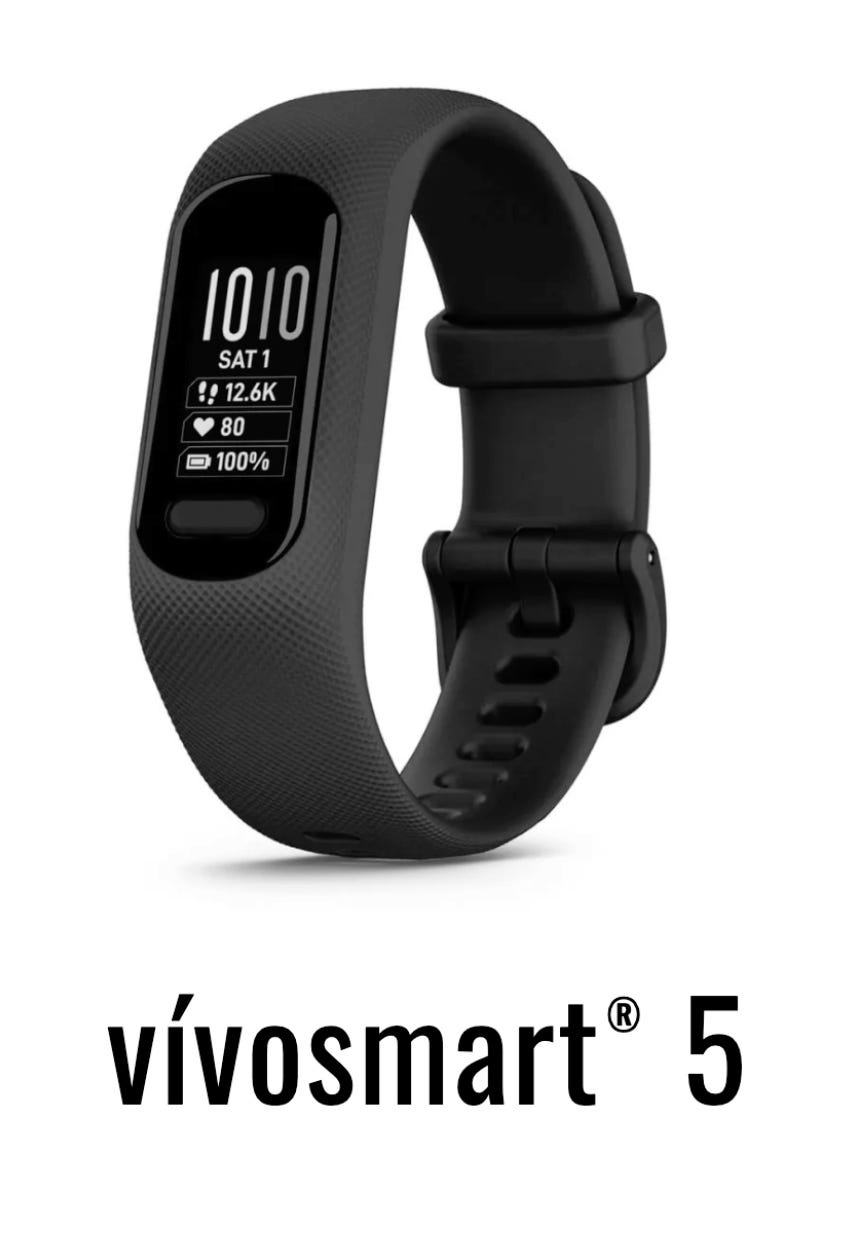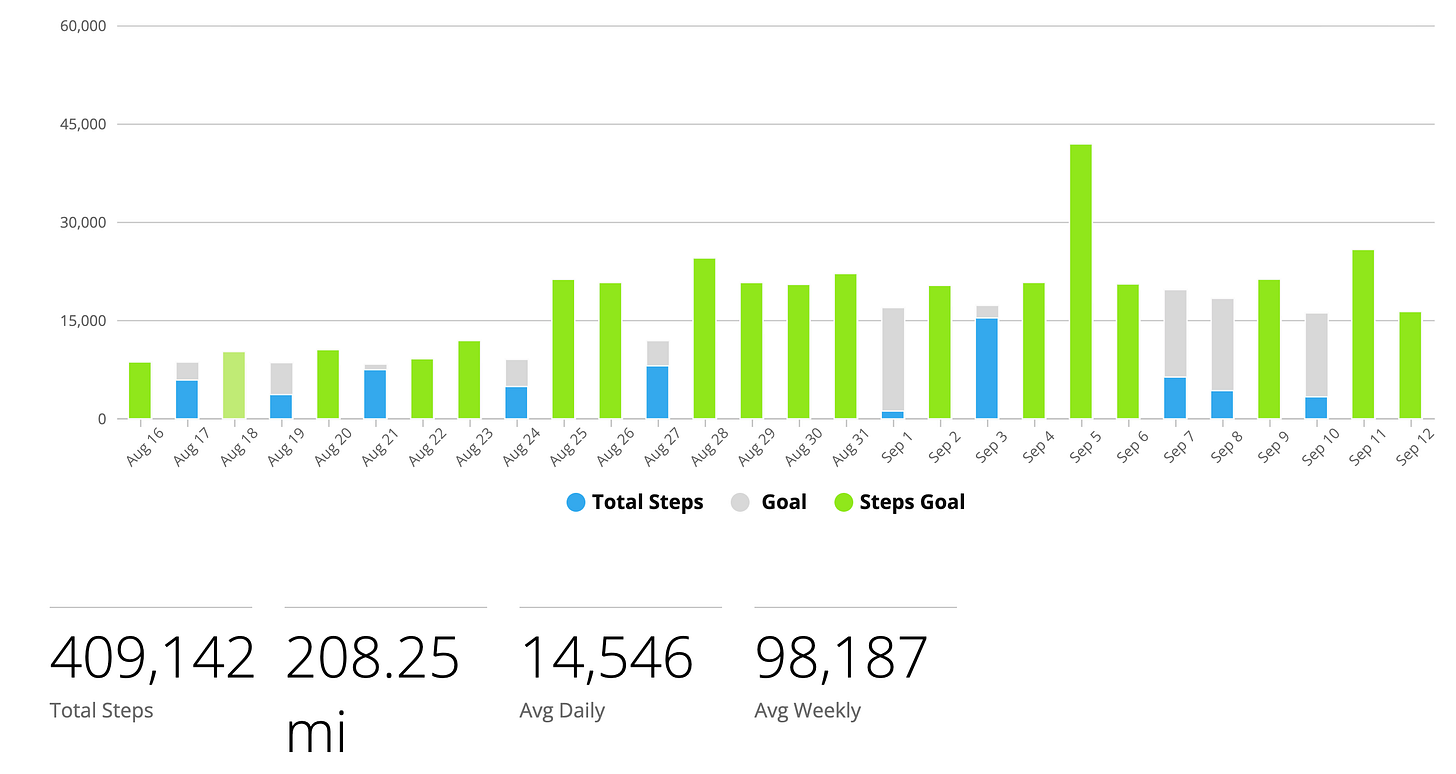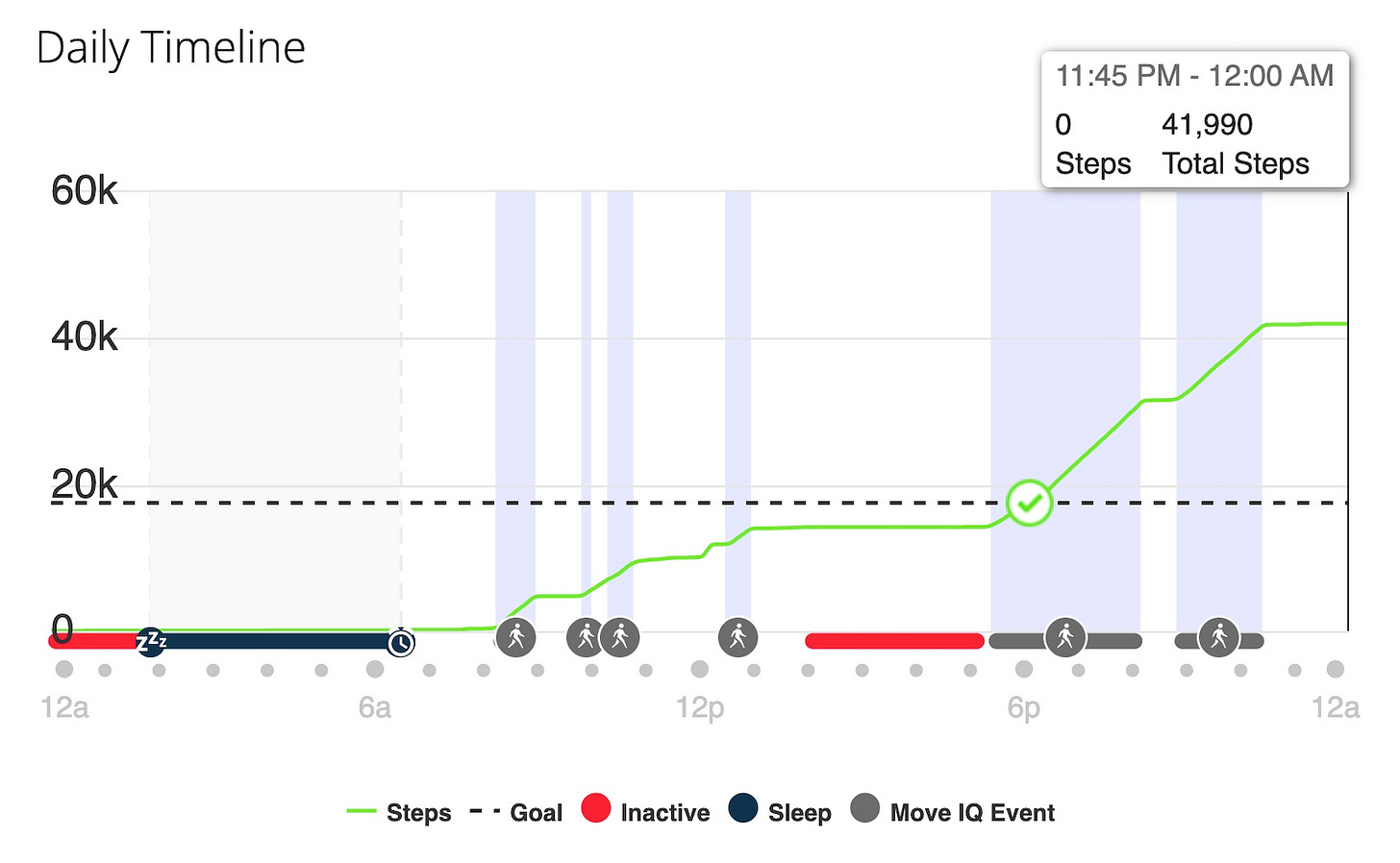Strollin’ Beats Scrollin’
Just unplug and hit the trails.
Things have been on a more or less upward trend for me since that surgery in early July. I will never get back the eighteen years that Lyme and its sequelae stole from me, but I am delighted to again be doing things I’ve not been able to do since the aughts.
Something had to give for me to spend three hours a day walking, and I think you can guess what it was from the title. Now permit me to show you what recovery looks like …
Monitoring:
That which is measured improves. I had a Fitbit Alta, then a Fitbit Charge 3, and for the last twenty months I’ve been wearing a Garmin Fenix 6S. I got the Alta in 2017 for the sake of sleep tracking, but I’d already been having trouble for years at that point.
The $99 Fitbit Inspire now offers sleep tracking, but if I were replacing my Fenix I would get a $149 Vivosmart 5. The motivation for Garmin is simple - there’s a bit of Python code available that will download ALL the details your tracker keeps via the Garmin Connect website.
Sleep:
SelfCare Saturday: Sleep was the very first article in this series and I was thrilled to see my average sleep go from under five hours to six and a half. Things are by no means perfect, but this is what’s happened since I started the glycine at bedtime protocol on the 17th. The dotted line is 10:00 AM, and I’m now in wait and see mode due to a couple medication changes. I thought I might even start setting an alarm, but I really got bowled over by my COVID/flu shot on the 6th.
Conditioning:
Over the years there have been occasional days where I’ve broke the ten mile mark, but look what started on August 25th. For the first time since 2007 I am conditioning with an eye on alpine hiking. The twenty one miles on the 5th was errands, then 13.5 miles over five hours, including laps on a loop with 60m of vertical.
I exceeded ten miles on twelve of nineteen days and the 5th and 6th included walking on steep grades. During the week leading up to the steep grades I weaned myself from the beta blocker I’ve been on for several years and my blood pressure has been less than 120/80. This is important for any sort of mountain expedition - if you’re taking a beta blocker it keeps your heart rate low, even if you’ve just started up a steep slope and your heart should speed up.
Conclusion:
I’m reviewing this on September 12th, a week after I’ve been completely beta blocker free. This is also a week since I started Singulair. The downturn in steps on September 7th can be attributed to getting my flu/COVID19 booster, which troubled me much more than in the past, I think due to my immune system no longer doing a mag dump a couple times a day.
I still don’t have a formal diagnosis of MCAS, the baffling Lyme sequelae that dogged me for so many years, but the OTC measures against it led to dramatic improvements. Singulair is my first foray into prescription solutions, but I’m stuck waiting till December to see a specialist who can deploy the big guns.
Like many things on this Substack, I don’t expect you to join me in putting in sixty mile weeks. But what I will strongly suggest, especially if you are inactive, is that you get a fitness tracker and trade an hour a day of doomscrolling for an hour of moving. I take my phone when I go, just in case I suffer some injury that requires a ride home, but it’s turned off for the duration. If you’ve got yours with you and you’re pulling it out every 300 steps, you’ll get some benefit from being in motion, but you are mostly certain NOT unplugged.
So … get out there and get moving?







Thanks for the positive call to action and the great update on results from your ai-aided diagnosis!